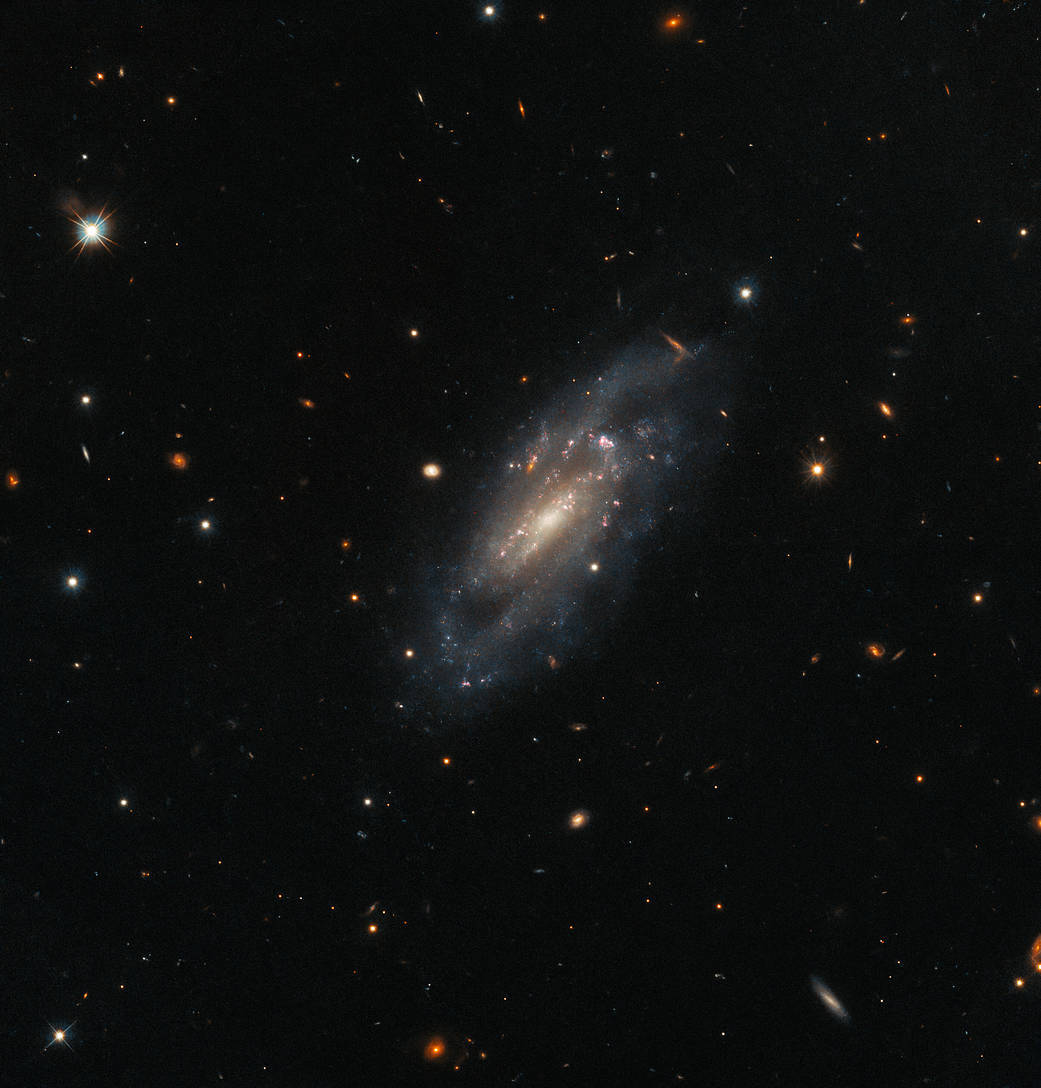9.07.2023

The spiral galaxy UGC 11860 seems to float serenely against a field of background galaxies in this image from the NASA/ESA Hubble Space Telescope. UGC 11860 lies around 184 million light-years away in the constellation Pegasus, and its untroubled appearance is deceiving; this galaxy recently played host to an almost unimaginably energetic stellar explosion.
A supernova explosion – the catastrophically violent end of a massive star’s life – was detected in UGC 11860 in 2014. Astronomers used Hubble’s Wide Field Camera 3 to search through the aftermath and analyze the lingering remnants of this vast cosmic explosion.
One team explored UGC 11860 to understand more about the star systems that eventually meet their demise in supernovae. The hugely energetic processes during supernova explosions are predominantly responsible for forging the elements between silicon and nickel on the periodic table. This means that understanding the influence of the masses and compositions of the progenitor star systems is vital to explaining how many of the chemical elements here on Earth originated.
Text credit: European Space Agency (ESA)
Image credit: ESA/Hubble & NASA, A. Filippenko, J. D. Lyman
Quelle: NASA

